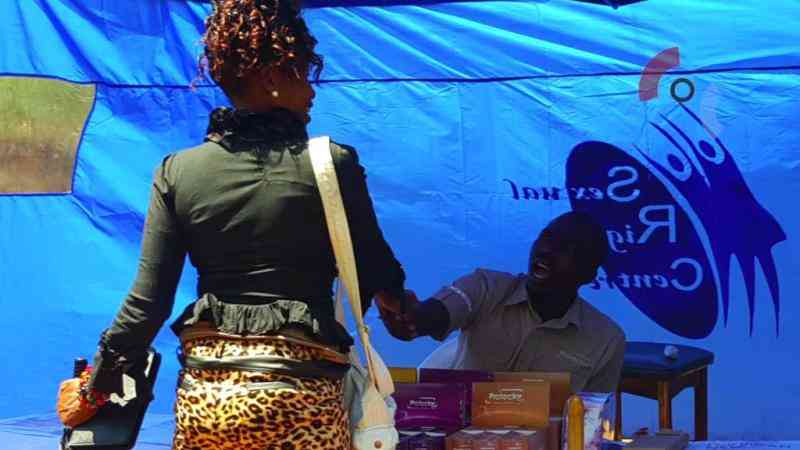
This year looks like it will be a bumper harvest, with the recently published crop assessment expecting a massive 2,3 million tonnes of maize, up 58% from last year.
Maize is central to a complex web of small-scale businesses supporting production, transport, processing and marketing.
These generate employment and income in the local economy, but are often missed in standard assessments of the rural economy.
This is the ‘hidden middle’ discussed in the previous blog, and maize is key.
All this is a far cry from how maize was thought about in the past.
In the colonial era, the notorious Maize Control Act forced small-scale Africa producers to sell their crops to the marketing authority and prices were fixed.
The aim was to control African production and allow European farmers to gain a foothold.
This pattern of control continued throughout the colonial era and persisted after Independence.
In the 1980s, the focus on national ‘food security’ meant heavy investment in centralised grain procurement and storage, with a big focus on boosting production in the communal areas.
By this time, white farmers on the large-scale farms had increasingly moved out of maize (or only produced it for feed) and so the imperative was to boost small-scale production.
This had some successes in the period following independence, and a new ‘green revolution’ was hailed.
This relied on heavy state support with hybrid seeds and subsidised fertilisers being central to the strategy.
Maize production did indeed increase until droughts struck as most was dryland maize.
However, the costs of production, including the heavy state subsidies did not stack up.
It would have been cheaper to import maize from elsewhere, as increasingly became the case.
In the structural adjustment era, subsidies declined but there were always opportunities for various schemes usually associated with election periods, where seed and fertiliser distribution were central.
Maize as the key food crop has always gained attention, and in the more recent period the many schemes associated with agricultural support have always been centred on maize.
So, in the past, a centralised marketing system was built up — centred on the Grain Marketing Board — with surplus maize grown on farms largely sold to GMB depots.
This was compulsory at times, and made for a very rigid, if well-ordered, marketing system.
Today the GMB remains important, and those with government loans remain obliged to sell there, but many complain it is inefficient, pays late, requires expensive transport arrangements and sales are subject to complex regulations, with payment only coming in local currency.
As a result, many prefer to sell elsewhere, and here the ‘hidden middle’ has emerged as a major player.
In our study sites in Chikombedzi in Chiredzi district, for example, most maize is sold to local dealers (makorokoza).
Although they offer lower prices than the GMB, they do pay immediately and in South Africa rand.
Farmers also cash in on local demand that has increased with the flood of people attending Madzibaba apostolic shrines.
Followers of the prophets may offer their labour in exchange for payments in grain, as well as buy up milled grain for cooking at their temporary settlements.
Transport has become essential for these new markets, and a number of entrepreneurs have invested in trucks to transport grain.
Smaller operations use local hires and then transport grain on buses or lorries moving with other goods.
In the rural areas, the need to move grain from farms to selling points has meant that everything from scotch carts to wheelbarrows are at a premium, as well as pickup trucks and tractors.
Welding and repair operations have sprung up to service, customise or build local forms of transport.
The net effect is that grain moves around far more than it did in the past, and through much more diverse routes.
Restrictions on grain movement exist, but there are ways to ‘facilitate’ the process, if the right money is paid to the right people.
Others accept the regulations and so move maize in small quantities more frequently or process it as meal, package it and sell it on in different ways.
Today entrepreneurs can move grain or processed meal quickly, fixing food deficits in drought hit areas while shifting surplus for elsewhere.
As the case studies that will be shared in the next blog show, many different players are involved, with a huge range of different business operations.
Input markets have been informalised too, with many dealers offering seeds, fertiliser, farm equipment and tools and other products, both in regional towns, but also travelling to local townships and occasional markets.
Local vendors are crucial in making the link between the customers and the larger retailer or wholesaler, and credit is offered down the chain to allow the commerce to take place.
Negotiating prices locally, offering credit and trading with known local vendors who come to your farm makes such markets more accessible and convenient for many, offering confidence in the exchange.
While informal input markets can deliver products to the farms, reducing the costs of transport and ensuring regular supply, unlike in formal shops, there are concerns with quality.
“Fake” products — whether seeds, chemicals or veterinary medicines — are common, and products may be sold without packaging and with no clear proof of authenticity.
For this reason, many prefer to exchange local inputs — such as open-pollinated seed varieties saved from previous seasons, or local treatments for animal diseases that they know are efficacious.
Some get involved in trading such products, but many are simply exchanged locally.
Formal markets still exist, but these have been heavily distorted by politicised “schemes” — such as command agriculture or the presidential inputs scheme.
Here there is increasing political and security service involvement (both the police force and army), making such schemes highly exclusionary, and often dependent on patronage relationships.
These schemes as well as the GMB were extensively critiqued in our interviews.
High costs of transport to depots; distrust of those grading products; the constraints of regulation around grain quality, meaning products get rejected; the need to be registered to sell and poor administration resulting in late payment were all factors that people mentioned.
With maize being such a central crop for the agricultural and food economy, it is no surprise that it has become central to the emergence of a ‘hidden middle’.
Like the research reporting on the experience elsewhere in Africa discussed last week, the Zimbabwean experience shows a growth in a whole array of non-farm activity, all generating employment and income for a diverse group of people.
This ranges from processing of maize (from basic shelling and grinding to selling pop-corn or cooked sadza), to transport operations (from scotch cart hire to large 30-tonne trucks), to storage (allowing people to trade around price differentials), to a whole array of marketing arrangements (from point sales in markets to mobile vendors to brokerage to new forms of wholesale and retail), to financing (from small-scale loans to contracting), to equipment hire, manufacture and repair (for all stages from production to sale), to supplying water/irrigation equipment to boost production, and many more.
All these activities are generating new business, mostly informal, nearly all “hidden” from view and therefore not counted, appreciated or supported.
All these activities have also resulted in much innovation, both technical and social.
Whether it is packaging for adding value to the product or machines for processing or making popcorn, or the whole array of equipment for transporting maize from fields to homes to markets, there are people involved in manufacture, repair and adaptation of different technologies.
This is a source of employment and business, and generates a lot of ‘hidden middle’ activity, both in rural areas, but most particularly in the small towns nearby.
Innovation is social too, as there must be new ways of doing business in Zimbabwe’s difficult economy.
This involves new forms of financing, barter exchange and vending that allow goods to be bought, sold and transported.
Much of this is facilitated by mobile phone technologies, both for communicating and moving cash.
Social media — notably the array of WhatsApp and Facebook groups — are also useful for advertising, exchanging skills and connecting people within networks.
The new hidden middle economy is therefore an important site of innovation, keeping the economy moving.
Those involved are not necessarily big business operators, but are usually smaller business people, often with farms themselves, but breaking out to make use of business opportunities, facilitated by connections and networks.
Taking many risks in the new agrarian economy, they employ people, generate profits and investment both in expanding their businesses but also in new activities, notably the building of houses and shops in small towns.
The gains of such activity in the ‘hidden middle’ is spread much further than the old formalised system, which was captured by a few with big resources and capital and, while still ‘informal’ and with businesses always finely balanced, the benefits are significant and remain local.
To illustrate all this in more depth, next week, we will share some case studies of those involved in the “hidden middle” of the maize value web from our field sites across Zimbabwe.
*This is the second blog in the series on the ‘hidden middle’ around maize production and marketing. This blog was written by Ian Scoones and first appeared on Zimbabweland









